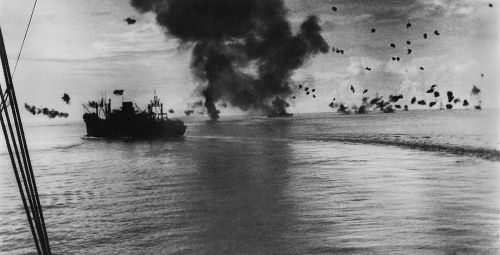O first reign corresponds to the period from September 7, 1822 to April 7, 1831, in which Brazil was ruled by D. Pedro I, first emperor of Brazil.
In other words, this period begins with the Independence of Brazil and ends with the abdication of Dom Pedro I.
The First Reign was marked by disputes between the agrarian elite and the Emperor, as well as regional conflicts in the Northeast and in Cisplatina. However, it was the moment that Brazil built its base as a State and a nation.
First Reign Characteristics
The First Reign is characterized by the period of formation of the Brazilian State. The government regime was in a constitutional monarchy whose head of state was Dom Pedro I.
In the economy, the main products exported are sugar, tobacco and cotton, in addition to the intense trade of enslaved people.
In cultural terms, this was the beginning of the search for its own identity, as Brazil was no longer part of the Portuguese Kingdom and began to see itself as an independent nation.
First Reign Policy
Once the battles for independence in Bahia were over, an assembly of deputies was convened to draft the constitution of the new country.
After many discussions, a project was presented in 1823 to the Emperor, but as it limited the powers of D. Peter I, he closed the Assembly and ordered the creation of a new Constitution, which was granted in 1824. In this new Magna Carta was the Moderating Power, which would be exercised by the emperor, in case of conflict between the legislative, executive and judiciary powers.
The Moderating Power was seen by many Brazilians as a way for the Emperor to centralize the other powers of the government.
Confederation of Ecuador
For this reason, some provinces in the Northeast, such as Pernambuco, Piauí, Ceará, Rio Grande do Norte, Paraíba, Sergipe and Alagoas, got together and founded the Confederation of Ecuador.
In 1824, the Confederation of Ecuador, declares war on the Empire. The objective was to achieve autonomy, separating from Brazil, but the provinces are unable to do so due to military defeat.
Cisplatin War
THE Cisplatin War, in 1825, was a dispute for the Province of Cisplatina between the Empire of Brazil and the United Provinces of Rio da Prata. Defeated militarily, Brazil, however, did not recognize that this territory could be part of what is now Argentina. The solution was to create an independent state, Uruguay.
These conflicts increased financial expenses, left dead, plus the loss of territory, cooperated to damage the image of D. Peter I.
First Kingdom Economy
Brazil traded products whose export prices were falling, such as cotton, sugar and tobacco.
Coffee marketing, in turn, began to expand. However, the development of “green gold” as it was called, was not yet sufficient to avert the economic crisis.
Expenses with conflicts, especially with the War of Cisplatin, are high, which forces the government to resort to loans with England.
Crisis and end of the First Reign
The wars and the economic crisis increased the discontent of the population and the elites with the government.
Furthermore, in 1826, D. João VI dies in Portugal. As D.Pedro I had never renounced his heir rights to the Portuguese throne, even in Brazil he assumed the throne as king of Portugal, with the name of D.Pedro IV. How D. Miguel, his brother, does not accept this attitude, a long dispute between the brothers began.
D. Pedro I, tries to negotiate with his brother, abdicates the Portuguese throne on his daughter, Maria da Glória, and proposes marriage to both. On his part, D. Miguel would have to respect the Constitution that was already in force in Portugal.
Dona Maria da Glória was sent to Portugal, but D. Miguel refuses the offer of marriage. Therefore, he ascends the Portuguese throne as king and disrespects the Magna Carta.
Bottled Night
In addition to the facts mentioned above, in Brazil, discontent with the Emperor reached the streets in the form of protests.
One of them was the Bottled Night, which took place from March 13 to 15, 1831, where the Portuguese who did not support the separation of Brazil and Portugal and the Brazilians faced each other in the streets of Rio de Janeiro.
Dom Pedro I had gone to the province of Minas Gerais to raise support for his cause. On his return, several Portuguese organized a big party to welcome him, but that ended in confusion among the Brazilians who complained against the government of D. Peter I.
Frightened by the violence in the streets, D. Pedro I decides to form a ministry made up only of Brazilians, the "Ministerio dos Marqueses". However, this was not enough to calm the tempers.
There was also suspicion that the assassination of journalist Líbero Badaró, which took place in 1830, a critic of the government, was ordered by the Emperor, bringing more revolt to the people.
Abdication of D. Peter I
Divided between the Portuguese and Brazilian thrones, facing protests in the street and with part of the Army against his figure, D. Pedro I abdicates the throne in favor of his son and heir, D. Peter II.
Then, he leaves for Europe to gather resources and armies to fight his brother Miguel and restore his daughter, Maria da Gloria, to the throne. Once the war is won, she will ascend to the Portuguese throne as Maria II.
In Brazil, however, D. Pedro II is only five years old and cannot govern. The solution, provided for in the Constitution, was to form a Regency until its majority.
This season will be known as Governing Period.
We have more texts on this subject:
- Independence of Brazil
- Coup of Age
- Brazilian History Questions in Enem


